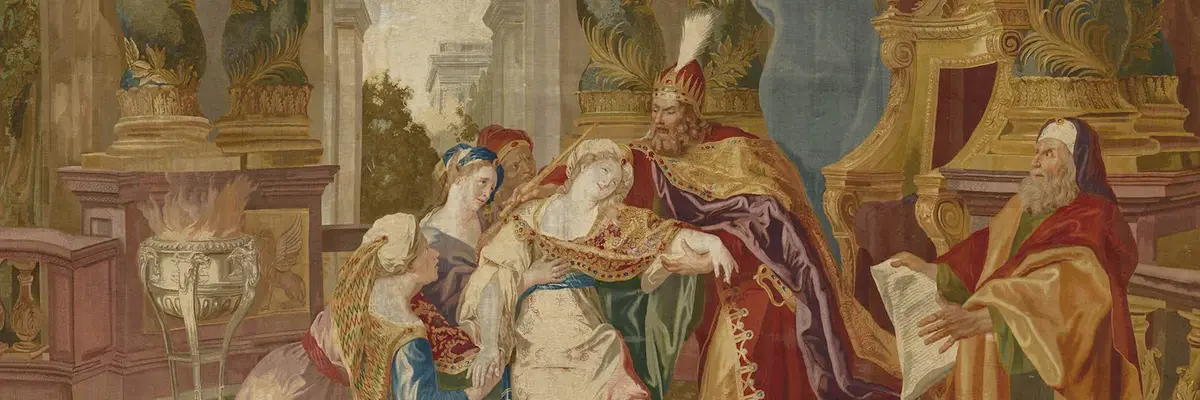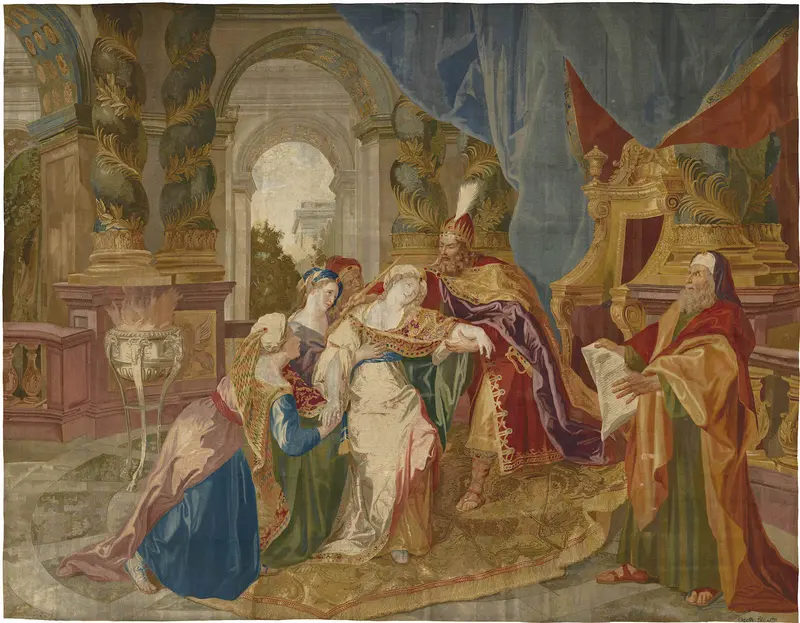Diese entstand
The tapestry was woven in the Manufacture Royale des Gobelins and was part of a lavish array of gifts presented by Napoleon Bonaparte to the first King of Saxony, Friedrich August I., in 1809. The latter owed his royal status to the French Emperor and in that year he travelled to Paris to visit his benefactor. The tapestry was given a prominent place in the dining room of the palace. In 1943, it was moved to Schleinitz Castle near Meissen for safekeeping, but after 1945 its whereabouts were unknown. It resurfaced unexpectedly on the art market in 2020.



![[Translate to English:] [Translate to English:]](/fileadmin/_processed_/f/2/csm_25-1-IMG_0437__2__a60eedb251.jpg)



